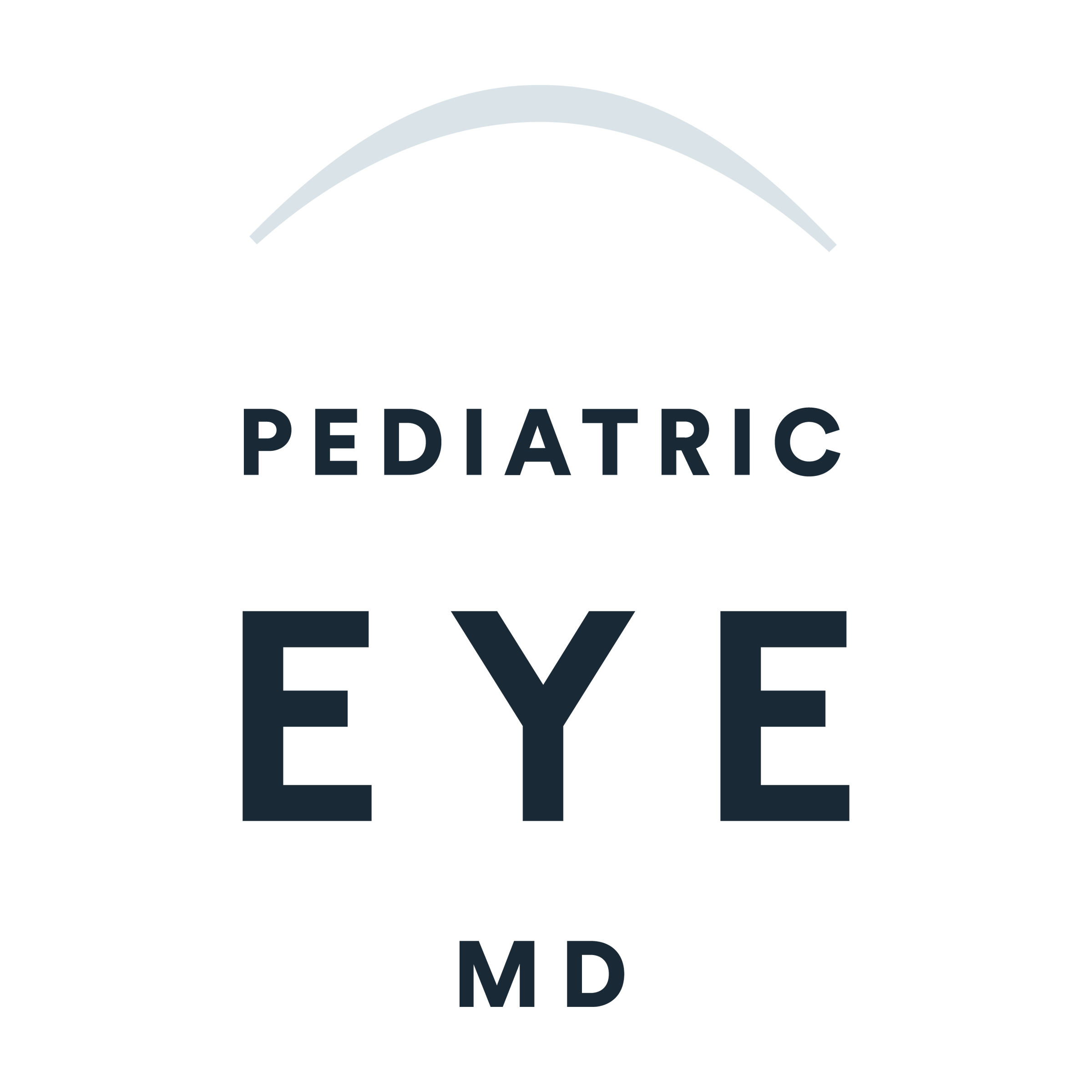Amblyopia
Amblyopia
Vision starts in the eye but actually occurs in the brain; we see with our brains. The job of the eye is to put things into focus and send these focused images to the brain – it is the brain that actually interprets and understands what these images are. When one eye sends the brain a more clear and focused image, the brain will favor the well-focused eye and learn to ignore the eye that sends it the blurred image. The vision centers in the brain that receive images from the blurred eye will not properly develop. Some people call this “lazy eye” – the proper medical term is amblyopia.
Training the brain to use the images from the ignored eye is the treatment for amblyopia. This is done by TEMPORARILY making the “good eye” see worse than the amblyopic eye. Once the brain accepts images from both eyes equally well, there is no further need for treatment.
So, how can we make the “good” eye temporarily see worse than the amblyopic eye?
The most common methods are to put a patch over the “good eye” or to use an eye drop (atropine) that blurs the “good eye.” This forces the brain to pay attention to the amblyopic eye. Sometimes it is necessary to use a contact lens to blur or occlude the “good eye.”
When Should Treatment Start
As early in life as possible. The brain learns to see only until the age of 8 years (give or take some months). The earlier in life that amblyopia treatment is started, the earlier it will end – this is because the brain is much more capable of learning when it is younger. Even so, it is almost always worth trying to treat amblyopia, even if it is first diagnosed in an 8 (or 9 or 10) year old. This is because people are not machines, and each brain is unique; some 9 or 10 year olds do respond to treatment.
Does Amblyopia Treatment Straighten The Eyes
No. Eye misalignment (strabismus) is a different type of problem. Sometimes, strabismus develops because of amblyopia and sometimes, amblyopia develops because of strabismus – however, treating one does not cure the other. When a child has amblyopia AND strabismus, it is usually best to correct the amblyopia first as this provides the best chance for a long-term success after strabismus surgery. Rarely, treating amblyopia can cause an eye turn, but the trade-off is two eyes that work well in exchange for a possible surgery to straighten the eyes (most parents consider this a decent trade).
What are the Risks of Wearing a Patch or Using Atropine?
For both patching and atropine, there is a very small risk of causing amblyopia in the “good eye” as a result of the brain favoring the amblyopic eye too much. This can usually be reversed by catching it early (in other words, proper follow-up is essential) and addressing the problem.
As for the risks of patching, some children are allergic to the adhesive tape used in the patch. In this case, try a different brand of patch. Or, switch to a gauze pad and hypoallergenic tape. Another alternative is to apply tincture of benzoin to the skin where the patch will be placed – this sticky material protects the skin. Finally, if your child wears glasses, there are “wrap-around” patches that completely cover the “good side” (remember that peeking defeats the treatment).
As for the risks of atropine, some children can have side effects because of sensitivity to the small doses used or because of an overdose. Atropine can be a very dangerous drug if used inappropriately – it must be kept out of reach of children and only used as indicated. Fortunately, atropine toxicity is unusual and mild when it does occur. So what are the signs of atropine toxicity? These can be limited to swelling and redness around the eye (local allergy) or can include redness all over the body, mental changes, inability to produce saliva, pass urine or stool, and electrical abnormalities of the heart; such serious side effects are very uncommon. The most common side effect is swelling and redness around the eye (local allergy).
What if My Child Refuses to Wear a Patch?
When possible, the best option is using atropine. However, atropine is not effective with dense amblyopia and occlusion of the “good eye” may be the only option for restoring vision. An occlusive or high powered contact lens placed on the “good eye” sometimes works, but the lens needs to be removed and cleaned regularly and some children figure out how to shift the lens or remove it.
The option of last resort is straight-forward but not emotionally easy – when good parenting skills (such as encouragement, explanation, rewards for cooperation) are insufficient, the only way to keep a patch on is to prevent the child from taking it off. While some parents consider it extreme, there are arm restraints commercially available that prevent the child from bending her elbow to remove the patch – these are identical to the restraints used in pediatric hospital units to prevent children from removing IVs or pulling on sutures. The child can still use her hands to play, and move her arms about, but she cannot bend her elbow to touch her face. Usually, these “no-no” restraints are needed for just a few days before a child agrees to wear the patch in exchange for removing the restraints. This is an unfair situation, and nobody decent likes restraining a child, but some parents face a difficult choice – permanently impaired vision and enforced compliance with therapy.
When Should Children Be Checked For Amblyopia?
Children should have a good baseline visual acuity determination by their pediatrician, family practitioner, optometrist, ophthalmologist, or school nurse at the age or 3 or 4 years. At this age, the vision in each eye should be tested separately; at 3 or 4 years, most children can read a picture chart (and some can read letters). If the vision in both eyes is 20/40 or worse, or if one eye sees worse by 2 lines on the chart (one eye is 20/60 and the other is 20/40), then referral to a specialist in children’s eye care is indicated. If the vision is equal between the eyes, and better than or equal to 20/40, then referral is not necessary.


